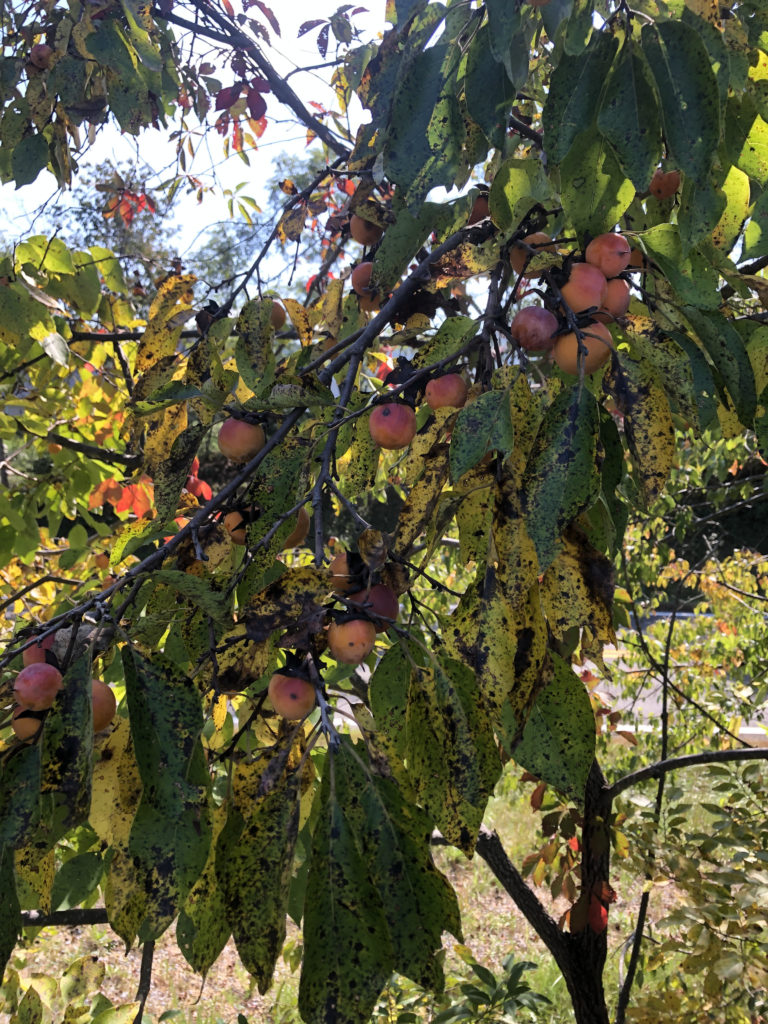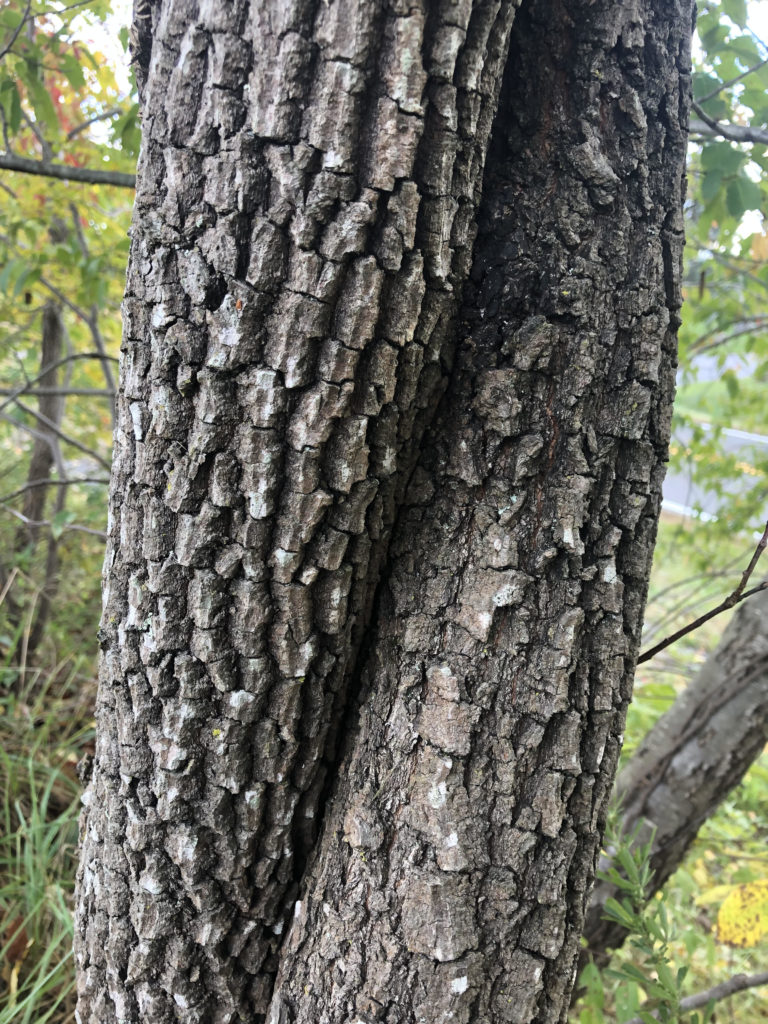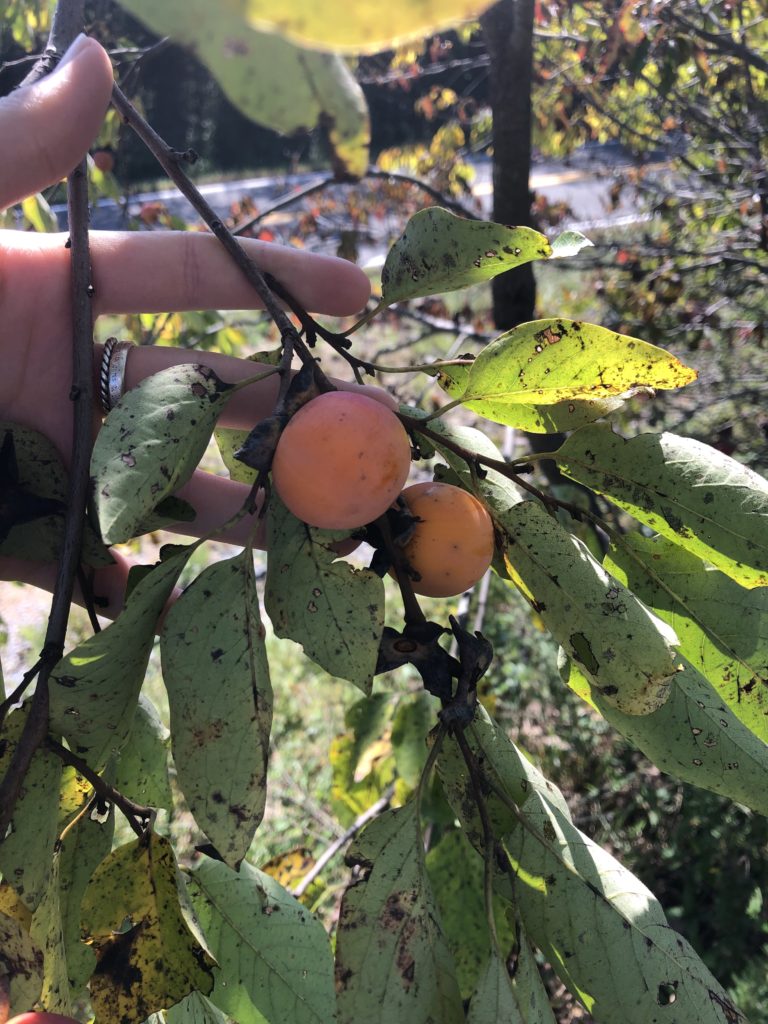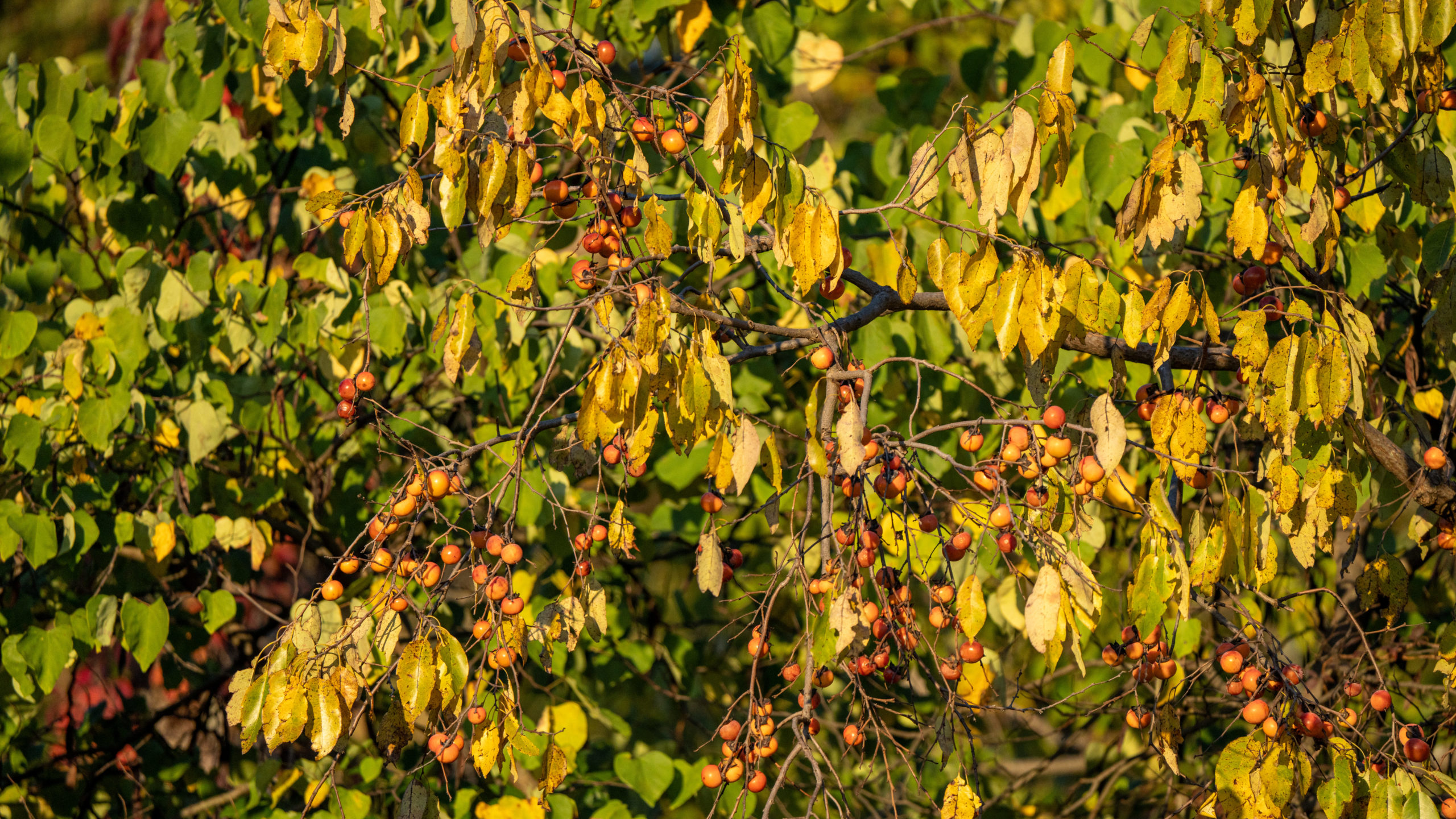
While walking outside this afternoon, I noticed the tree branches along my fence row were uncharacteristically low. A quick walk over revealed that our persimmon trees are producing fruit, and a lot of it!
Common persimmon, Diospyros virginiana, is a slow-growing, deciduous species that is native to the Southeast. The tree itself is fairly nondescript and often goes unnoticed along field edges, roadways and woodlands. Its leaves are alternate, simple and dark green. The leaves are also leathery to the touch and provide a satisfying crunch when you snap them in half. Persimmons generally grow to be about 15-20’ tall, even though certain specimens have reached a whopping 60’ in height. As the tree matures, the bark darkens and breaks up into thick, scaley plates between orange fissures. Many folks often compare it to charcoal briquettes or alligator skin.
Persimmons also produce soft mast in the fall, which is an edible favorite for animals and humans alike. This is great news for wildlife watchers as the fruit will attract deer, songbirds, turkeys, rabbits, opossums, raccoons, squirrels and more!
For the more adventurous reader, be aware the fruit is not sweet at the start of the fall season. It can be very astringent and cause mouth-tingling/numbing, especially when green. However, I can attest that biting into an unripe persimmon will not cause any long-lasting harm—just a scrunched-up face and a few laughing onlookers.
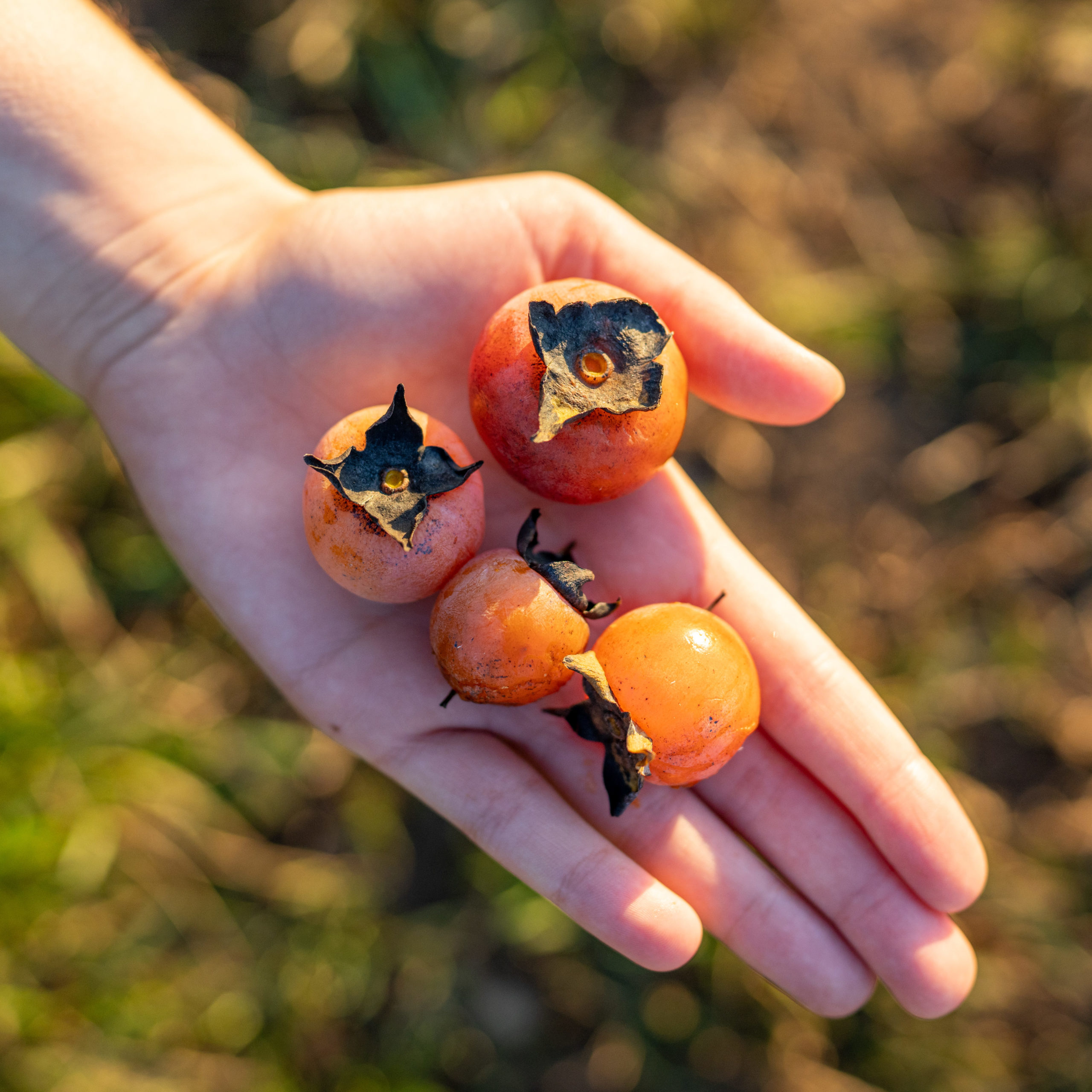
Persimmons are best harvested after a hard freeze, and this typically occurs mid to late fall. It is also a safe bet to assume fallen persimmons are ripe for the eating. Flavors tend to vary from tree to tree and you may get a light taste of caramel, honey or orange jello.
The American persimmon is also found in folklore, and according to old-timers, persimmon seeds can be used to predict the severity of winter weather. After harvesting the fruit, you split the seed into two halves and look for one of three shapes. The shapes themselves are actually the cotyledon or developing leaf within a seed. A knife indicates a cold, icy winter (where the wind will cut you like a knife). A fork indicates a mild winter with powdery snow and a spoon indicates an abundance of heavy, wet snow. I cracked open a few seeds and, to my delight, saw numerous spoons!
While common persimmon has various delicious and cultural attributes, it is rarely grown as a food or ornamental plant. This is for three primary reasons:
- Common persimmon is a slow-growing tree and often takes 4-8 years to bloom and fruit. This is a considerably long-term investment, and many folks prefer purchasing their cooking persimmons from specialty shops.
- Our native fruits are significantly smaller than Asian persimmon varieties (Fuyu, Hachiya, etc.), meaning you need more to cook or bake with.
- Persimmons are also dioecious, which means trees are either male or female. This requires both sexes to be present to ensure a bountiful harvest. The tricky bit is that young persimmons are near impossible to correctly sex. However, once trees are mature, you can examine the flowers. Flowers hanging in clusters indicate a male, whereas flowers hanging individually indicate a female.
If you’re lucky enough to have some persimmons on or near your property, I would encourage you to observe them this fall. You will likely have a flurry of wildlife activity as fruits fully mature and drop. You can also look into various persimmon recipes if you would like to use them for yourself. Here are some fun ideas to get you started!

Hallie Harriman is PEC’s Potomac Watershed Field Representative working in Clarke, Loudoun and northern Fauquier County. She can be reached at [email protected].

